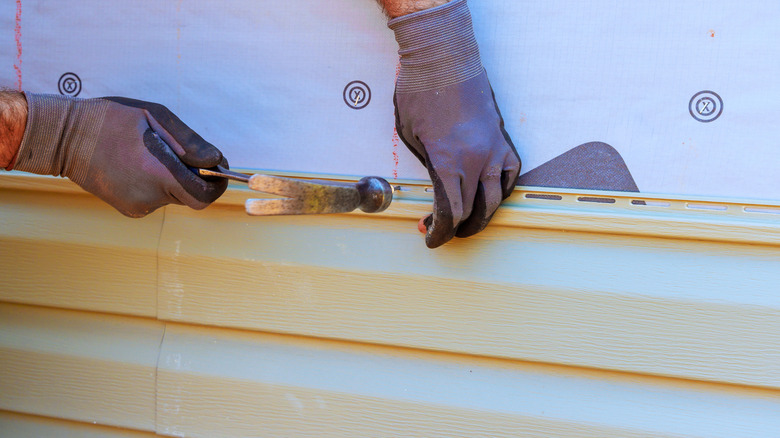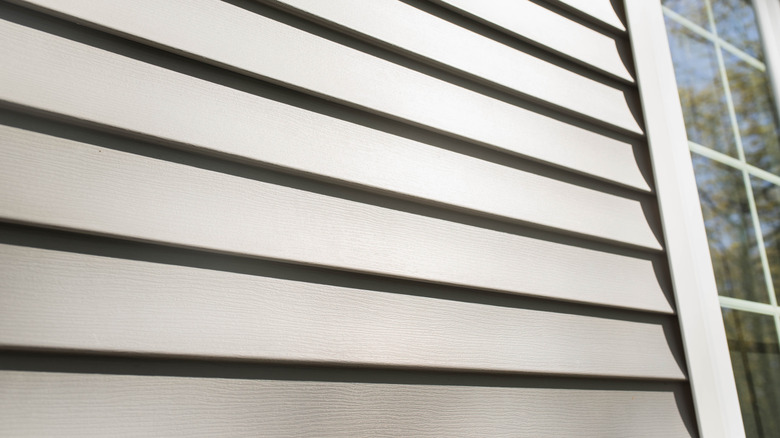Vinyl Siding: When Should You Paint It Versus Replace It?
Vinyl siding is a popular choice of homeowners for a lot of reasons. It's durable, low-maintenance, and resistant to weather damage. It also comes in a wide range of colors and styles, which makes it easy to enhance your home's curb appeal while protecting its inner structure from weather and pests. Another great thing about vinyl siding is that it lasts longer than wood plank siding — as long as 40 years or more. Though its resistance to the elements helps it maintain its appearance, past the 10-year mark, you may start to notice the color begin to fade. Over the lifespan of your home's vinyl siding, various other factors can cause damage to some of the planks, such as extreme weather events or even stray golf balls. If your siding is looking worse for wear, you may be debating between replacing and painting it. Since each of these options has both financial and practical implications, it's important to spend time learning what they are before making a final decision.
Painting is generally a good option if the damage is mostly cosmetic and you're not willing to spend on the cost of replacement. Meanwhile, full replacement is a costly, but necessary upgrade if you want a long-term solution, or if substantial damage is present. But while you may save money by painting your vinyl siding, factors such as its current state and your desired color may make this the wrong choice for you. If you are leaning toward replacing your siding altogether, you will need to consider if it's financially feasible and whether your new siding will be vulnerable to the same issues that necessitated the replacement.
The pros and cons of replacing vinyl siding
The pros of replacing vinyl siding are longevity and the opportunity to increase the quality of the material cladding your home's exterior walls. Since vinyl siding lasts several decades, replacing it can take further repairs off your to-do list for the foreseeable future. With numerous styles and features to choose from, replacing your old, worn siding also allows you to upgrade your home and give it a new look.
The biggest downside of replacing a home's vinyl siding is the cost. While the price will vary greatly depending on the size of your house, expect to pay anywhere from under $4,000 for a small house to over $35,000 for a large one. If your home has intricate architectural features, siding installers will charge more for their labor. Likewise, you'll pay more if the installers haul away the old siding, or if any repairs are needed to the home's exterior before the new siding goes up. Siding type is another cost consideration to be aware of. Insulated vinyl siding, for instance, can cost up to 50% more than standard siding. The final drawback of installing new vinyl siding is that it will remain vulnerable to the same environmental conditions that damaged the old material. If you're replacing your siding due to fading, for example, and no there's no new shade source, expect your new siding to fade with time as well.
The pros and cons of painting vinyl siding
If replacing the vinyl siding is out of your budget, painting it may be a more feasible option. The cost savings of painting your vinyl siding versus replacing it can be in the 10s of thousands of dollars, depending on the size of your house. The average cost of having vinyl siding painted by a professional is $4,000. If you opt to paint yourself, you can remove labor from that amount and enjoy even more savings. Another benefit of painting over replacing is that paint can extend the life of your existing siding by up to 10 years by protecting it against the elements. For the environmentally conscious, making your siding last longer means less plastic in the landfill. Finally, when you paint your vinyl siding, you will be able to choose a custom color paint, giving you more control of your home's appearance.
If you are sold on painting your vinyl siding, you should know there are downsides to this option, too. First off, while you can customize the color of your vinyl-safe exterior paint, there are color options that are off the table. Painting your vinyl siding with dark paint can cause warping due to heat absorption. Also, if your current siding is still under warranty, a new coat of paint may void it. Finally, if your siding is dented or cracked, or if you suspect there is structural damage behind it, painting alone won't address the root cause of the problem.


